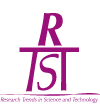International Conference on
Research Trends in Science and Technology
March 7-9, 2005 • Beirut & Byblos, Lebanon
Tutorials
I. Introduction to Bioinformatics
— By Professor Sami Khuri, San Jose State University, California, USA
A brief summary of Bioinformatics
Recent advances in molecular biology have produced an avalanche of data, including DNA sequences and genetic maps that cover thousands of genes whose functions are either poorly understood or completely unknown. Demands for sophisticated analysis of biological sequences are driving forward the research area of bioinformatics. The areas where computer science can be applied to assist in the deciphering process of the data range from assembly of sequence fragments, analysis of DNA, RNA and protein sequences, their structure and function, and prediction of gene locations. In essence, bioinformatics addresses problems related to the storage, retrieval and analysis of information about biological structure, sequence and function.
Tutorial Outline
After a brief introduction to molecular biology and a description of commonly used tools, algorithms, and databases in bioinformatics, the tutorial describes specific tasks that can be completed using combinations of the tools and databases. The tutorial will introduce some of the most successful tools, such as the local and global sequence alignment packages: BLAST, Smith-Waterman, and CLUSTALW. The tutorial also covers Hidden Markov Models, and shows how they can be used in gene prediction. The tutorial is self-contained and does not assume any background knowledge in biology. The attendees will be given a copy of the PowerPoint slides. The following is a brief description of the topics that the tutorial will cover:
- Part 1: Biology. A very brief introduction of the cell, transcription and translation, amino acids, proteins and bases.
- Part 2: Pairwise Alignment. Dynamic Programming, substitution matrices, BLAST.
- Part 3: Multiple Sequence Alignment. CLUSTALW.
- Part 4: Database Search. Nucleotide and protein databases.
- Part 5: Hidden Markov Models (HMM), profile HMM, and gene prediction.
Expected background of the attendees
Just an interest in Biology and the desire to learn about the main challenging problems in bioinformatics.
Date: March 8, 2005
Place: Science Bldg 606, Byblos Campus
Time: 3:30 to 6:30 p.m.
Registration:
Contact Dr. Ahmad Kabbani, Conference Chair
E-mail: akabbani@lau.edu.lb
Telephone +961 1 867618 / 9 / 20, ext. 1221
II. Lectures on Nonequilibrium Statistical Mechanics
— By Professor Byung Chan Eu, McGill University, Canada
- Generalized Thermodynamics
- Microchannel Flows and Kinetic Theory
- Transport Coefficients of Liquids (Conference Talk)
Date: March 7, 2005
Place: Faculty Lounge, Beirut Campus
Time: 3:30 to 5:50 p.m.
Registration:
Contact Dr. Ahmad Kabbani, Conference Chair
E-mail: akabbani@lau.edu.lb
Telephone +961 1 867618 / 9 / 20, ext. 1221
III. Inverse Problems in the Applied Sciences and Recovery Problems from Partial Information
— by Dr. M. Zuhair Nashed, Professor of Mathematics and of Electrical Engineering, University of Central Florida, USA
Course Description
Many problems in applied mathematics, the physical/natural siences, and engineering can be classified as direct, inverse, or identification problems. In a direct problem, we are given a cause or input to a “system” and we are asked to determine the effect or output. In an inverse prolem, we are given an “observed” output and we want to determine an input (or inputs) that produced the oberved output. The purpose of this short course is to provide an introduction of these two important areas and discuss dilemmas and methodologies for solving inverse problems and recovery problems from partial or indirect information.
Date and Time: Monday March 7, 2005, 3:30 – 5:30 p.m.
Place: Auditorium, Irwin Hall, Beirut Campus
